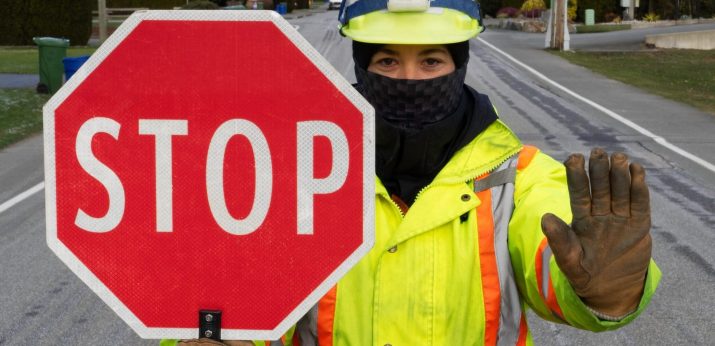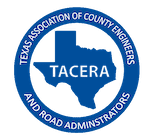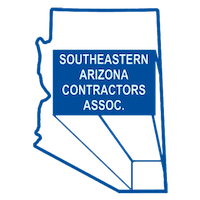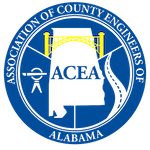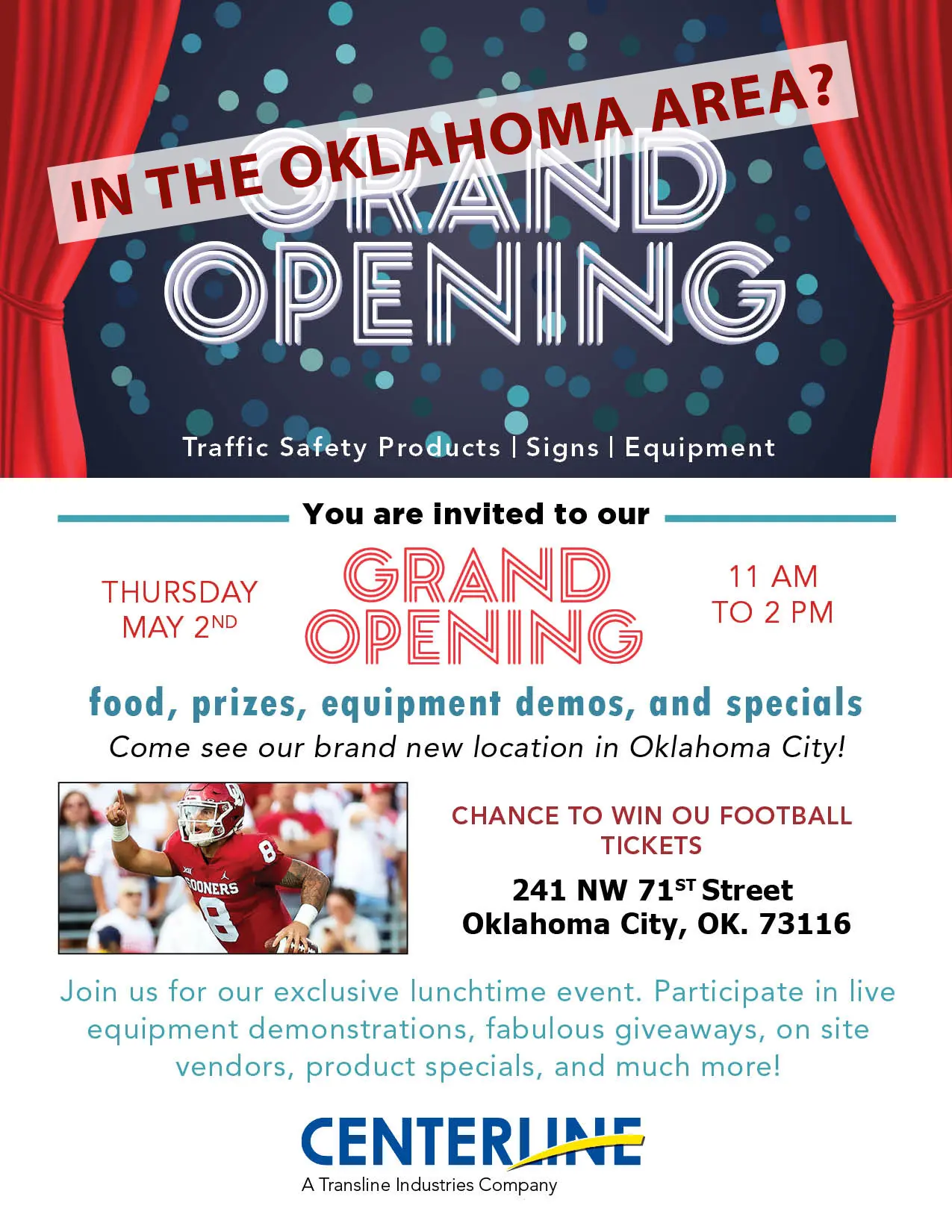Importance of Traffic Safety Equipment
If there’s one thing the Federal Highway Administration (FHWA), the US Department of Labor, and the Occupational Safety and Health Administration all agree on, it’s that the importance of traffic safety equipment can never be overstated.
Transportation-related incidents have, for years, been the biggest contributor to fatal work injuries. In 2021, for instance, they accounted for 1,982 fatal injuries – which represents 38.2% of the 5,190 work-related deaths recorded in the US.
On sorting out all the fatalities by occupation, the Bureau of Labor Statistics further established that 887 of the victims were drivers; 475 were employed in installation, repair, and maintenance; while 302 specialized in protective services (patrol officers, transit police, firefighters, etc).
It’s quite possible that some of these unfortunate incidences would not have occurred if the victims had the right traffic safety equipment. Something as simple as a safety cone or reflective vest could mean the difference between life and death.
The benefits are not exclusive to workers. Traffic safety equipment is designed to serve and protect all types of road users. What’s more, it has proven to be effective in controlling movement, guiding people, and marking boundaries.
Examples include LED traffic signs, traffic mirrors, road flares, traffic wands, traffic cones, traffic delineators, and traffic barricades. They’re especially useful to construction companies, road maintenance crews, event organizers, and local governments.
For first-time buyers, however, the wide range of traffic safety equipment can be quite overwhelming. And to help them out, this guide outlines all the essential factors they should consider when purchasing safety equipment for roads, safety equipment for events, or safety equipment for construction sites.
Types of Traffic Safety Equipment
There’s an endless variety of traffic safety equipment that you could get for your workers, event, projects, vehicle, roads, buildings, or institutions. They include;
-
Traffic Cones: These are cone-shaped beacons that are placed on road surfaces to temporarily block off or redirect traffic. They come with a broad base for increased stability, a neon orange body for easy daytime visibility, plus reflective white bands that facilitate nighttime visibility.
-
Reflective Vests: Just as the name suggests, reflective vests are luminous, high-visibility outer garments worn in hazardous environments to make people easily distinguishable. They are typically built from retroreflective materials that pop out even in low-light conditions. The Occupational Safety and Health Administration (OSHA) requires people to wear them when they’re working as flaggers or within areas of traffic flow.
-
Traffic Barricades: These are barriers that control the flow of traffic by temporarily cutting off access to restricted areas. The objective is usually to isolate a section and prevent interference from regular traffic. To achieve this, the traffic barricades are usually designed as solid moveable road obstacles, while their bodies are composed of plastic or composite materials.
-
Traffic Delineators: Otherwise known as hazard markers, traffic delineators are self-supporting longitudinal indicators that are placed on roads in a series to warn motorists of a potential hazard. They are designed to appear as highly retroreflective boundaries.
-
Traffic Wands: These are lightweight handheld LED tubes that illuminate to aid in directing traffic on roads, in airports, or at special interest zones. Traffic coordinators use them because they are highly visible and easier to follow than bare arms.
-
Road Flares: Road flares are lightable markers that combust in a bright neon-red flame to alert other road users of a potential hazard. They can also be used to send out a distress signal and possibly raise caution about a roadside emergency.
-
Traffic Mirrors: Often held in a circular frame, traffic mirrors are special convex mirrors that are usually installed in tight corners and blind spots. Their strategic positioning allows them to reflect images – although distorted – from both sides of the blind corner simultaneously, thereby extending the field of vision to give motorists a sneak peek around the corner.
-
LED Traffic Signs: While regular traffic signs display static messages that are printed onto sheets of metal, LED traffic signs use light-emitting diodes to communicate digitally. Their vibrant illumination makes them significantly superior at capturing the attention of motorists.
Factors to Consider when Choosing Traffic Safety Equipment
To select the right traffic safety equipment, always keep in mind the following three factors.
#1. Environment
The environment that you’ll be working in determines the type, build, and material specifications for your safety equipment.
“Environment” in this case refers to not just your workplace, but also the job conditions, the climate of the area, and the surrounding physical elements. In particular, you might want to consider the type of risks that you’ll be facing, the corresponding light and visibility levels, your level of engagement, the volume of people that you’ll be interacting with, as well as the prevailing weather conditions.
For example – if you’re planning to temporarily cordon off a road construction zone, your choice of traffic barricade should be ideal for that type of project, plus the accompanying volume and flow of traffic.
For minor repairs along low-speed roads or pedestrian pavements, a Type I traffic barricade would be sufficient. They are usually about 24 inches wide and have a single reflective panel.
Type II barricades, on the other hand, come with two reflective panels for added visibility. They’re recommended for urban streets and moderately busy roads. Some of the projects at this level include utility jobs, manhole maintenance, and the removal of downed limbs.
Otherwise, to protect your road construction workers on high-speed highways, freeways, and expressways, you might want to pick Type III instead. These ones are equipped with three reflective panels that measure at least 48 inches in width. Road contractors could use them for projects like clearing flooded streets, trimming trees, and paving roads.
#2. Purpose
Another thing you should consider is what you intend to use the traffic safety equipment for.
For starters, are you looking for event safety equipment or road safety equipment? Do you need it for protection, demarcation, traffic direction, signaling, or cautioning?
If you’re organizing a public event, for instance, you’ll need specialized crowd control equipment such as barricades, barrels, and cones. Their job is to mark boundaries, coordinate traffic, and keep people away from high-risk areas.
As for the event stewards, they could use personal protective equipment. A high visibility vest would be handy in keeping them conspicuous at work, and a helmet would protect them from any projectiles from the crowd.
Going by standards set by the American National Standards Institute (ANSI), the most appropriate hi-vis vests for event stewards would be the ones in the Off-Road (Type O) or Class 1 category. But, if the crowd is being controlled by law enforcement personnel, you’d rather get Type P (Public Safety)traffic vests.
Road construction workers, on the other hand, are supposed to wear Type R high-viz safety vests – which are built purposely for roadway use. You might also need to close part of the road with traffic barricades, which would then go well with traffic signs like “Right Lane Closed”, “Men at Work”, or “Caution, Heavy Trucks Turning”.
Otherwise, for road maintenance crews that are planning to extend their operations into the night, it would be wise to add LED traffic signs and light towers. This will help in reducing the risk of traffic accidents in low-light conditions.
#3. Regulations
There are multiple federal and state laws that govern the application, standard, and material specifications for traffic safety equipment.
You can start with the Manual on Uniform Traffic Control Devices (MUTCD), which has been implemented by the Federal Highway Administration (FHWA). The latest version was published in 2009, and it defines the minimum traffic control and safety standards that all states should maintain for uniformity.
In particular, you should pay special attention to Part 2 of the guidebook – as it spells out the regulations on traffic signs and barricades. This is where you come to figure out the legally accepted designs and sizes for different types of warning signs, guide signs, general service signs, message signs, and emergency signs.
Another highly relevant set of laws to keep in mind is PPE legislation by the Occupational Safety and Health Administration (OSHA). It outlines the standards that various categories of personal protective equipment should adhere to minimize exposure to workplace hazards. You should be able to confirm, for instance, the appropriate type, size, and material for your road construction safety vests.
Tips on Making an Informed Decision
The purchase process itself should be structured as follows:
Step #1: Do your research
Once you’ve defined the environment and purpose of the traffic safety equipment, you can go on and perform extensive research into the safety equipment options in the market. Try to understand;
-
How they’re used.
-
Where they’re used.
-
How they perform.
-
How much they cost.
-
The laws and standards that you’ll be required to comply with.
-
Their purchase and rental options.
Take, for instance, someone who’s shopping for airport traffic safety equipment. Analyses of the environment and purposes would establish that they probably need safety equipment in their flight dispatch, airplane maintenance, airport security, cabin crew, flight safety, and airport maintenance departments.
To work out the details for each category of equipment, they’ll need to research extensively about various gear combinations, along with their specifications, performance levels, and compliance standards.
This is when, for example, they’ll be able to work out the differences between their pilots’ high-vis vests and the ground crew’s safety vests. They’d also compare various models of airport marshaling wands to understand their visibility from both the ground personnel’s and pilot’s point of view.
If you’re otherwise looking to buy safety equipment for a construction site, it would be a good idea to review labor laws on the usage of PPE, safety compliance requirements, as well as records of common workplace injuries in your industry.
Other than that, you might want to get a detailed list of all the traffic signs and barriers approved in your area of operation. Local state authorities can help with that.
Step #2: Ask the experts
As you learn more about traffic safety equipment, questions might start coming up on various pertinent issues.
For example, you might start wondering about the liabilities that come with each category of traffic safety equipment. And while at it, you’d possibly also want to know who takes the liability when a road user crashes into your duly safeguarded work site – is it the federal government, the state, the road user, or your construction company?
Such inquiries are best answered by experts. You can relay them to traffic control specialists, traffic engineers, or officers in your state’s department of transportation.
Traffic engineers, in particular, are widely available across all the major U.S. cities. They contribute quite significantly to the planning, design, development, and governance of traffic safety systems. That makes them credible references for matters related to traffic signs, safety indicators, and local highway regulations.
If your interest is safety equipment for events, you could instead consult hospitality and event management gurus. They’re the ones who are well-positioned to provide contextual information on any concerns that you might have, especially on compliance requirements.
Some of these experts additionally offer training in safety and crowd control. They advise on not just the right traffic safety equipment, but also the best usage and maintenance strategies. And if you’re unsure about where to buy the safety gear, they’d also be happy to provide recommendations.
Otherwise, for quick and free expert guidance, you could check with reputable sellers themselves. Just send them an email detailing your project’s safety requirements, and they’ll get back to you with a list of the available gear and their specifications.
Step #3. Choose quality over price
Even with the implementation of multiple laws and standards for regulating traffic safety equipment, the US market is still attracting items of questionable quality. They’re usually distributed by unscrupulous, profit-hungry traders, who take advantage of legal loopholes to import substandard safety equipment.
It can be difficult to point out the low-grade stuff based on their external appearance and online photos. But, the attached pricing tags almost always sell them out – as they tend to be substantially cheaper than the authentic options.
You might, for instance, end up unknowingly purchasing safety cones with subpar retroreflectivity. This simple mistake could ultimately lead to a road crash that would otherwise have been easily prevented.
To avoid falling victim to such price traps, you should obsessively prioritize quality over everything else. You can start by looking up the quality standards for your targeted traffic safety equipment – they’re available on the MUTCD and OSHA’s websites. That should provide you with a template for comparing and confirming the quality of the options in the market.
One of the essential things to look out for in your quality analysis is ISO 9001 certification. Just try and find out the manufacturer of each item you’re interested in, and then check if they’re duly certified.
A physical assessment of the products would also help. Plastic traffic cones, for example, ought to be built from high-density polyethylene that is resistant to fading, UV rays, and cracking.
Step #4: Consider the warranty and support
As you perform the quality assessments, remember to evaluate even the warranty and support that comes with the traffic safety equipment.
Warranty is a reliable indicator of the level of confidence the manufacturer has in their product. The longer the guarantee period, the better the corresponding quality and durability of the equipment.
However you plan to use the safety gear, you’ll need something that is built to last. It should resist wear and tear for a prolonged period of time, even under extreme weather conditions. What’s more, maintenance ought to be minimal through the years of service.
That’s exactly what you get when you go for reflective traffic signs rated “Diamond Grade”. Options in this category have met all mandated MUTCD retroreflectivity standards across all their colors. Even more impressive is the length of time they’ll serve you without fading – as their warranty period alone spans 12 years.
You could, instead, opt for a “High-Intensity Grade” traffic sign. They too have ticked all the FHWA checkboxes for retroreflectivity. But, the signs are not as durable as their diamond counterparts – the warranty doesn’t stretch beyond 10 years.
If the traffic signs are for short-term use, though, you should be fine with “Engineer Grade”. The life expectancy here is about 5 to 7 years, and it doesn’t come warranty.
Frequently Asked Questions on Traffic Safety Equipment
What are the different types of traffic safety equipment?
Traffic safety equipment can be classified based on the application environment, mode of usage, target audience, and purpose.
Some of the categories include pedestrian controls, emergency signs, LED traffic signs, traffic calming equipment, temporary road signs, barrier systems, safety equipment for construction, and safety equipment for events.
Then if you dive deeper, you’ll get to the sub-categories of traffic safety equipment. This is where you find traffic mirrors, safety cones, road flares, traffic barricades, reflective vests, traffic delineators, bollards, and traffic wands.
Why do I need traffic safety equipment?
You need traffic safety equipment so you can alert road users of hazards and, thereby, safeguard your well-being, public safety, and the well-being of the service providers on duty. Whenever normal road conditions are altered, safety equipment is used to raise awareness, and then maybe coordinate traffic away from the alteration.
A good example of such a disturbance would be road maintenance operations. In that case, you’ll need traffic safety equipment to cordon off the sections undergoing maintenance, caution other road users of the potential risks, as well as keep the area visible even in low-light conditions.
How do I choose the right traffic safety equipment?
To select the right safety equipment, you should take into account the specific needs of each instance, the environment in which you intend to deploy the equipment, the planned purpose of the equipment, as well as the legal requirements and implications that come with it.
When you’ve worked out those details, you can then conduct research on the technical specifications for appropriate equipment. You might also want to consult traffic safety experts for contextual guidance and recommendations, before finally zeroing in on the high-quality safety items that offer a warranty with minimal maintenance.
How do I maintain my traffic safety equipment?
Proper maintenance of traffic safety equipment begins with regular inspections. By consistently monitoring the condition of your equipment, you should be able to notice any deterioration or defects as soon as they start developing.
Minor maintenance procedures include; changing the batteries in your traffic wands, and maybe readjusting the fit of your reflective vest.
Other than that, you should consider cleaning all your traffic safety equipment from time to time. This will remove any accumulated grime, thereby restoring the gear to full capacity, luminosity, and retroreflectivity. Your safety traffic signals could also use a hedge trim every now and then to keep them conspicuous.
How often should I replace my traffic safety equipment?
Traffic safety equipment ought to be replaced when it reaches end of life or becomes outdated.
End of life, in this case, refers to that point when the equipment ultimately gives in to years of progressive wear and tear. By then, it will have lost much of its luster, retro-reflectivity, luminosity, and color pigment.
For safety flares, though, end of life comes after 3.5 years. That’s when they expire due to chemical deterioration.
Your traffic safety equipment could also be rendered obsolete by a drastic change in the regulation policies. This is what happened to some road signs in September 2022, when the 2009 version of MUTCD was officially implemented.
Can I rent traffic safety equipment?
Yes, some dealers give you the option of either buying or renting traffic safety equipment.
Renting, however, is only recommended for short-term users. An example would be someone who’s hosting a one-time public event. Renting the equipment would save them not just money, but also the trouble of finding storage space after the event.
If you happen to be an event organizer, however, purchasing the equipment would be the most economical option. The same applies to road contractors, institutions, law enforcement, personnel, firefighters, etc.
Conclusion
We’ve walked you through all these details because we appreciate that traffic safety is a matter of life and death. It’s not the type of thing you can afford to rush through or jeopardize in any way.
So, take all the time you need to review your workplace environment, plus the conditions and hazards that come with it. Then from there, you can develop an exhaustive list of all the safety equipment options that would fit your needs.
The subsequent purchase process should be a breeze – as you’ll be dealing with a highly credible traffic safety equipment distributor. We only stock items that we’ve tested out and confirmed to be durable, fully certified, and great in value. Plus, our experts will give you all the guidance you need before, during, and after purchasing the safety equipment.
So, in a way, you could say that we’ll be your lifetime partners in this exciting journey. Let’s get the ball rolling today by filling up the shopping cart with your favorite traffic safety equipment.




